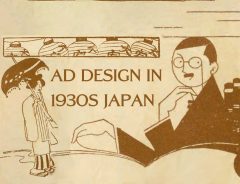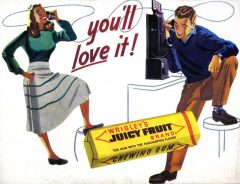- Tags:
- capsule toy / Egg / Gyaru / Reiwa Gyaru / Retro
Related Article
-

A treasure trove of free ad designs and patterns from prewar Japan is yours at NDL Image Bank
-

Juicy Fruit Retro Look-alike from Lotte
-

Play Old School Games On This Crazy Expensive 24k Gold NES
-

Tomioka High School Dance Club Grads Energize Oreo’s Zany “Pandance” Commercial
-

Fan Trailer Gives Star Wars: A New Hope Old School 80’s Anime Makeover
-

Ever Wanted A Boiled Egg That Comes In A Long Stick? It Turns Out There Is Such A Thing!



Trends might come and go but some are definitely here to stay. This is one sentiment that’s been proven by the fashion subculture that is gyaru.
Gyaru peaked in popularity during the ‘90s and early 2000s. This original version is now dubbed “Heisei Gyaru” after the era of the Japanese calendar it took place in. Gyaru is believed to have emerged out of a desire to subvert the typical image of a Japanese schoolgirl. Highschoolers would hike up their skirts to shorter lengths, put on non-standard loose socks, dye their hair from a natural black, and get full body tans in a subcategory that’s known as kogyaru.
As more and more students were spotted in kogyaru styles, the trend received wide press coverage in Japan. Celebrities like Ayumi Hamasaki and Namie Amuro were even adopting gyaru trends, meanwhile, parents and other adults expressed concerns that the style looked “too sexual” and “immoral.” But as anyone who’s ever met a teenager would know, this only served to make young adherents push back and exaggerate the style even more. Thus, another prominent subcategory of gyaru was born, known as ganguro. Their tans became darker, their hair colors became lighter, and they made heavy use of eyeliner, white eye makeup and white lipstick.
Nowadays, you’d be hard pressed to find anyone still rocking those original trends. However, gyaru lives on. Shibuya 109, the hotspot for gyaru items during its peak, still exists as a popular shopping destination. “Reiwa Gyaru”, named after the current Japanese calendar era, is a modernized version of the style often spotted on Japanese influencers. It puts emphasis on subtler shades of hair dye and on the eyes through distinctive makeup and colored contact lenses. Egg, one of the original gyaru fashion magazines, was even revived with an online version four years ago after initially being discontinued in 2014.
It’s through this revival of Egg that we’re seeing a new lineup of capsule toys featuring images of gyaru in the past and what it’s become now.
Six of Egg’s covers throughout the years have been transformed into keychains for the capsule toy collection. Images of classic gyaru styles alongside their unique vocabulary are featured as plastic pins, meanwhile, duos and trios of gyaru style icons are featured on the metal pin versions. Stickers of Egg’s logo will also be included in random capsules.
出典:出典名
You can find Egg’s gyaru mementos in capsule toy machines all across Japan.